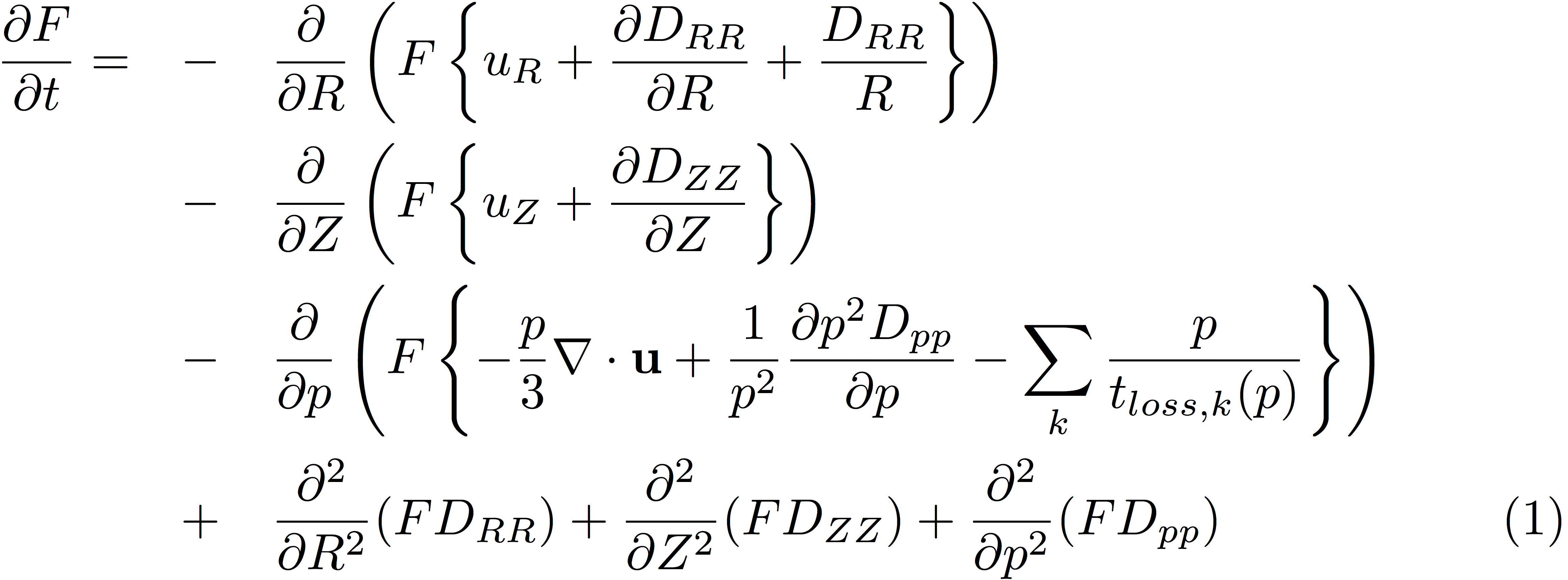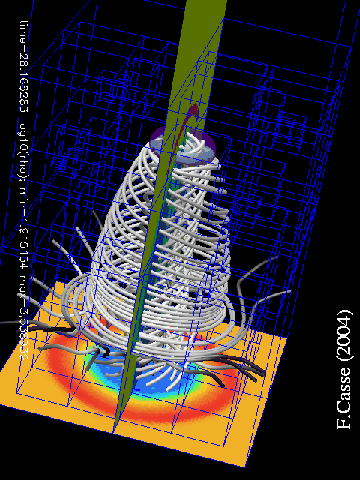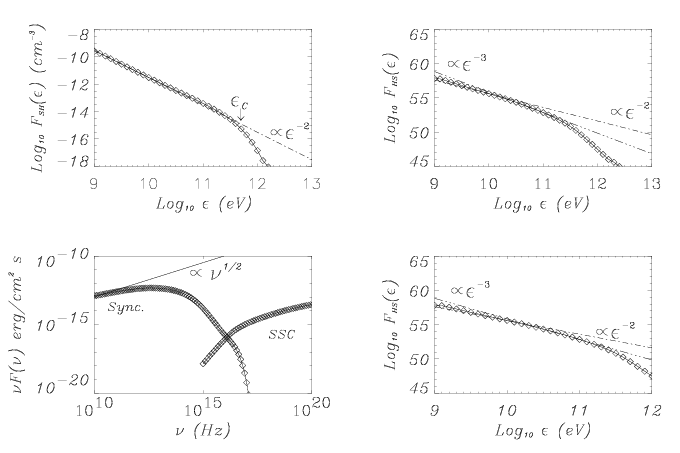Kinetic Theory & MHD Simulations:
The Way to compute Astrophysical Particle Acceleration
Over
the last decades, a growing flow of data has indicated the
astrophysical community that high energy particles (identified as
atomic nuclei from hydrogen to iron) are constantly interacting with
Earth's atmosphere. These interactions are called atmospheric shower
and stands for the multiple nuclear reaction iniated by the first
collision between the atmosphere and the primary particle: the cosmic
ray. Since their
discovery by V. Hess in
1912, the cosmic rays have always been an intriguing topic. Indeed,
we know that the energy of the cosmic rays is ranging from a few
GeV (solar wind) up to a few 1020
eV
(corresponding to the kinetic energy of a tennis ball propagating at
100 km/h !). Explaining the origin of such powerful particles will be
one of the big challenge for XXIst century astrophysics.
So far, two scenarios may explain the production of these powerful
particles. In the first class of scenario, ultra-high energy cosmic
rays (UHECR) may come from the decay of supermassive particles. These
supermassive particles are predicted by Grand Unification Theories
where
electromagnetic and weak interactions are merging (near 1025eV).
A second class of scenario involves astrophysical accelerators where
relativistic particles can be accelerated in order to become
UHECR. In
these studies, a accelerating mechanism called "Fermi acceleration" is
often employed. It is based upon the interaction of relativistic
particles with an astrophysical shock. This mechanism predicts
power-law
spectra (as observed) but has some problems to identify the source of
the most powerful events since most of the astrophysical objects do
have general properties that seem to be in disagreement with the
maximal energy reached by UHECR.
In
order to
study the acceleration of cosmic ray by astrophysical
objects, I have developed in collaboration with A. Marcowith (CESR), a
numerical tool that can compute such particle acceleration including
all terms involved in a Fokker-Planck description. Indeed, relativistic
particles embedded in a thermal shocked plasma cannot be described by
using only magnetohydrodynamics (MHD) but by coupling MHD
and Kinetic Theory at once. We have coupled the AMRVAC code
(done by R. Keppens) with a second code that solves Fokker-Planck
equations by using stochastic differential equations. Equation (1)
displays the usual 2D axisymmetric convection-diffusion kinetic equation used
in cosmic-ray transport .

In our
works (see publication section), we have included all
energy losses as well as a full description of the stochastic
acceleration by first order Fermi mechanism in our kinetic
destricption, including thus:
- Synchro-Compton radiation from electrons and
cosmic rays
- Collision with thermal protons
- Inelastic collision with ambient photons
(GZK effect when photons are CMB photons).
Based
on syncrotron radiation emitted by
relativistic electrons (prone to the same Fermi acceleration mechanism
than cosmic rays), we were able to derive maximal energy constraints
about some
astrophysical objects, in particular for extragalactic jet terminal
shocks.
In these
shocks both analytical estimations and multi-scale Kinetic-MHD
computations were in agreement, as for example in 3C273:

MHD simulation of an extragalactic jet
terminal shock
&
The related kinetic computations on relativistic electrons

|



